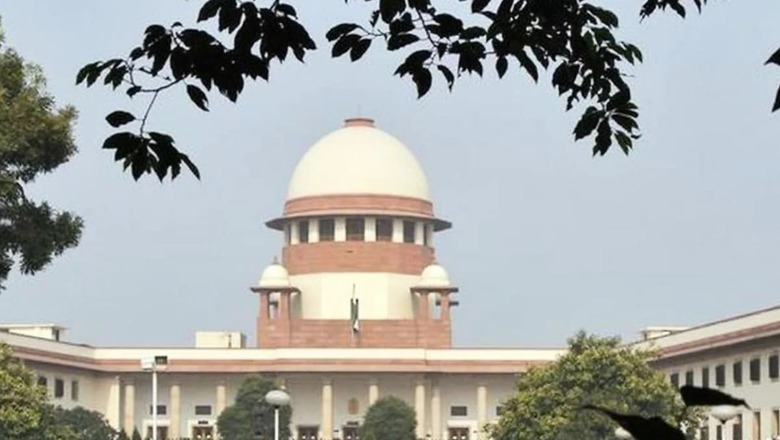
views
The Supreme Court has commenced suo motu hearings on the Kanwar Yatra that happens every year. The ostensible reason was the threat it posed to public safety given that we were in the grip of the second COVID-19 wave and that a third wave is predicted to commence in August, and given the repeated lockdowns and consequent harm to the economy. While concerns about this event being a super spreader are valid, there are more valid concerns when it comes to how the Supreme Court picks and chooses cases to take cognizance of.
For example, another super-spreader event euphemistically labelled “the farmers protest” has been going on for better part of this year, and has invited absolutely no scrutiny by the Supreme Court in spite of the enormous inconvenience it has caused to citizens, not to mention the riots and destruction of public infrastructure and private property on several occasions. Given that the mobility of the yatra and consequent higher spread risk played a significant role in the Supreme Court’s direction to the Uttar Pradesh government today, it begs the question why hasn’t the same criteria been applied to the farmers protests—who are essentially changing guard and rotating participants in and out.
There are several aspects to asking this question. The first is an issue of equitable justice. Why is it that some people have to wait in line for decades for their cases to get heard while certain other celebrity activists can approach judges in their houses at midnight for bail hearings? This violates the fundamental basis of equality before law and essentially gives VIP treatment to some applicants.
Moreover, what is the rationale for the Supreme Court to take on and fast track new cases despite a massive backlog of pending cases. The invariable answer to this is the vaguely defined area of “public interest” and “urgency”—but how then does one claim that Kanwar Yatras are an “urgent” threat to public health while “farmers protests” are not? This goes beyond just definitional problems as the root of any justice system is the diktat that the law is the law because it is consistent in its application, the law shorn of consistency is tyranny. So where then is the consistency here?
India can be said to be in the grips of a serious governance crisis stemming from a complete failure of its law and order system. The root of this failure is five-fold. First: the lack of judicial transparency and accountability; second: case pendency; third: the lack of anything remotely resembling consistent jurisprudence; fourth: severe under-policing; fifth: an unnecessary complication of laws and legal language. Each of these has a debilitating negative effect on the other four—acting as a toxic cocktail where an already frayed system descends into chaos and where the abuse of laws is rampant.
Let’s take a simple example: It is precisely because it is not known what the Supreme Court will take suo motu notice of or not, that certain elements will stoke trouble –knowing full well that there is a high probability of getting away with it—usually at the state level. The knowledge that case pendency will weigh heavily on courts only acts as an enabler, not as a deterrent.
Moreover, given the wild swings of what is considered dissent and what is not, everybody stands a good chance of getting away. The problem is while this gives a crook or an oppressive state machinery a good chance of getting away with its actions, it also severely ties down the already overburdened police—essentially turning every case into a game of chance. For example, a cop acting to break up the severe public nuisance that was Shaheen Bagh would not know how his actions would be judged. As it turned out, neither did the judges –where an illegal occupation of a public space, deliberately chosen to create maximum disruption to the public, was silently legitimised through judicial delays in what should have been a clear cut case upholding the right to protest but not the venue of the protest.
This then gravely affects the fourth factor—severe under policing as the police themselves do not know what cases to pursue on what basis, leading to both harassment of innocents or ignoring serious crimes. Finally, the penchant of Indian lawmakers to draft extraordinarily daft legislation, masking its ineffectuality in pompous verbosity only allows too much room for both police and judiciary to exacerbate the problem of a lack of consistency.
Perhaps, the only consistent feature of the Supreme Court’s ruling seems to be that it adjudicates rapidly only when it knows its orders will be obeyed, such as with the UP government regarding the Kanwar Yatra, and choosing to turn a nelson’s eye, when there is a high risk that protesters will ignore the Supreme Court as was the case with Shaheen Bagh or the “farmers protests”. Essentially the law is for those who will obey it, not for criminal elements who very clearly will not—a violation of every tenet of “dharmo rakshati rakshitah”.
All of this begs the question—when will we have meaningful judicial and police reforms in this country? When will judgments be restricted by law to just two pages? When will language simplification of laws and judgments happen? When will penalties be imposed for variations in jurisprudence or pendency? When will checks and balances be enacted on a judiciary that has in violation of the Constitution essentially become a self-regulating body free of legislative, executive, or electoral moderation—a luxury no other branch of government has been afforded?
The arbitrariness of a dismissal of the state government was done away with in the S.R. Bommai case. Today, it is all the more imperative, given the eroding trust in institutions, for the Supreme Court collegium to come up with clear guidelines and conditionalities for triggering its “suo motu” powers.
The views expressed in this article are those of the author and do not represent the stand of this publication.
Read all the Latest News, Breaking News and Coronavirus News here.

















Comments
0 comment